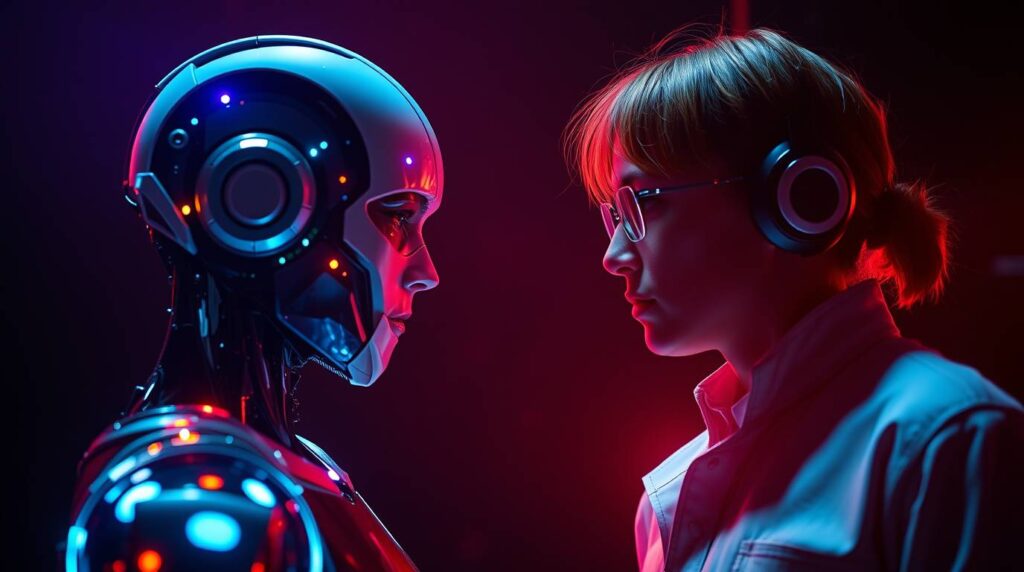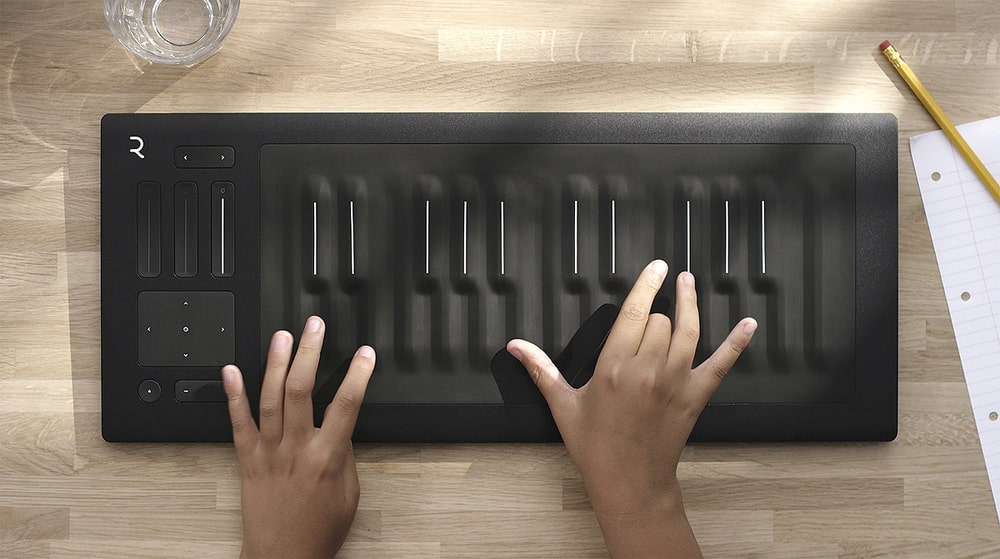With the spread of generative tools based on large language models, now accessible to the general public, numerous AI music generators have emerged. These systems have reached a level where the boundary between human and AI composition is increasingly blurred. Research has shown that AI-generated music can deceive roughly half of listeners, making them believe it was created by a human.
For years, the primary goal in this field has been the so-called musical Turing test. Although AI can now compose music that fools listeners, the question of “humanness” in performance and production remains open.
1. Subjective (Human) Methods of Differentiation
Despite significant advances in AI, subtle differences can still be detected by experienced listeners, though these cues are becoming less obvious over time.
1.1. Musical and Emotional Criteria
A study conducted at the University of York, involving 50 participants with advanced musical knowledge, found that human-composed music received significantly higher ratings compared to computer-generated excerpts. Participants evaluated the works according to six criteria: stylistic success, aesthetic satisfaction, repetition or self-reference, melody, harmony, and rhythm. It was found that a substantial gap still exists between algorithmic methods and human compositions.
Possible indicators of AI origin include:
- Structural predictability: AI tends to follow learned patterns more rigidly, whereas humans deliberately break rules for creative effect.
- Emotional nuance: Human composers bring personal emotional experiences that create unique emotional textures. In media music, emotional connection is key. AI may simulate emotion based on learned patterns but cannot truly understand meaning.
- Inconsistencies or “glitches”: Strange artifacts, awkward phrases, or unnatural transitions in melody or lyrics can be telling signs.
- Lyrics: AI systems can generate both music and lyrics. Poor rhyme schemes or repetitive lyrical structures may reveal AI origin. Some generators, like Suno, frequently use specific words such as “neon,” “shadows,” or “whispers.”
1.2. The Role of Production Nuances
Performance nuances—tiny imperfections in timing, tuning, or tone that result from human playing—are still difficult for AI to replicate. Even with virtual instruments, live orchestral recordings remain preferred due to the perceived realism and authenticity absent in synthetic sound. Human performance often contains “non-musical” sounds such as chair creaks, breathing, pedal noise, or the friction of fingers on strings.
However, studies show that attempts to “humanize” AI music have little measurable impact. Adding minor human noises (breathing, coughing, chair creaks) or convolution reverbs did not significantly increase the likelihood that listeners would perceive the music as human-made. This suggests that AI music is still perceived as less authentic due to unnatural transitions, repetitive patterns, or tonal and expressive mismatches, rather than production values alone.
1.3. Age-Related Perception Differences
In two of four studies conducted by Collins and Manji, age played a key role: younger respondents (ages 18–24) were least able to tell AI music apart from human music. Conversely, older participants (ages 35–44) were more skeptical and more often correctly stated that “none of the tracks were created by a human.”
2. Technical (Algorithmic) Detection Methods
As generative models evolve, detecting artificially produced content has become critical—especially for combating fraud on streaming platforms.
2.1. Detecting Autoencoder Artifacts (AE Fingerprinting)
Modern generative music models typically consist of two components: an autoencoder (AE) that compresses and reconstructs sound, and an internal module that generates musical sequences.
A major research focus is determining whether a sample originates from an artificial decoder, regardless of musical content. This approach targets generation artifacts.
- High accuracy: Even simple convolutional neural networks (CNNs) can achieve very high accuracy (above 99%) when trained to distinguish real audio from its autoencoded reconstruction (e.g., 99.8% accuracy).
- Optimal input: Converting audio samples into amplitude spectrograms produced the best results (99.8%), though phase-based models also performed well (99.6%).
- Generalization: Models trained to detect AE artifacts can effectively identify fully AI-generated tracks—achieving up to 99.9% accuracy on MusicGen outputs (text-to-music), even when those samples were not part of the training set.
2.2. Using ACR and MRT Technologies
Automatic Content Recognition (ACR) and Music Recognition Technologies (MRT), used by companies like Pex, can detect reuse of known AI-generated material.
- Digital fingerprints: A digital fingerprint of a known AI song is compared against other audio content.
- Modification detection: Pex Search can identify AI compositions that retain instrumental stems from original tracks, even if they were altered (e.g., pitch or tempo changes). This enables detection of reused instrumentals even when vocals have been replaced by AI-generated voices (for instance, impersonations of Kurt Cobain).
- Voice identification: Voice-matching technologies trained on known vocal corpora are being integrated with Pex Search to detect voice cloning of famous artists.
2.3. Available Tools
Several commercial tools offer detection capabilities:
- IRCAM Amplify: A third-party online detector that identified Suno-generated tracks with 81.8% to 98% probability.
- Pex: Employs ACR and MRT to detect tracks, identify artist impersonations, and estimate AI generation likelihood.
- Deezer: The streaming service began labeling albums containing AI-generated songs using proprietary technology to identify subtle, characteristic patterns in AI-created audio.
3. Challenges and Limitations of AI Detectors
Although detectors show high accuracy under controlled conditions, real-world deployment faces significant obstacles.
3.1. Vulnerability to Audio Manipulation
High laboratory accuracy does not imply robustness. Users can evade detectors through basic audio modifications.
- Performance drop: Accuracy drops sharply after applying pitch shifts (±2 semitones), white noise, or re-encoding (e.g., MP3, AAC, or Opus at 64 kbps).
- “Real by default” bias: When confronted with manipulated inputs, models often default to predicting “real” (human), since the distortions mask AI artifacts. This indicates poor generalization to unseen conditions.
3.2. Generalization Problem
AI music detectors usually fail to generalize to generation methods using unknown (new) autoencoders. Studies show that models trained on one decoder (e.g., Encodec) perform significantly worse when tested on reconstructions from others (e.g., DAC or GriffinMel).
3.3. Cat-and-Mouse Dynamics and Ethics
AI music detection is a cat-and-mouse game, where adversaries continually find new ways to evade recognition while new models are constantly released. In the long run, it is unrealistic to anticipate all possible cases.
There is also an ethical concern: many commercial detectors are closed-source, making independent verification difficult. This opacity may lead to false positives, where genuine creators struggle to prove that their work is human-made.
Conclusion
AI-generated music continues to improve, and while listeners often cannot distinguish between human and artificial compositions, research consistently shows that human music scores higher across six key musical criteria.
Current differentiation methods rely on:
- Subjective evaluation: Detecting subtle imperfections in structure, emotional depth, lyrics, or expressiveness (though AI increasingly mimics these “imperfections”).
- Technical forensics: Using advanced algorithms (e.g., CNNs trained on amplitude spectrograms) to detect autoencoder artifacts, as well as ACR/MRT systems to track known AI works and voice forgeries.
As AI technologies evolve, experts agree that relying solely on human perception—or even on current detectors—is becoming increasingly difficult. This calls for continual updates to detection systems and perhaps a rethinking of how we perceive music itself.
Ultimately, the deeper question may not be who created the music, but whether it moves us and carries meaning.
If you’re curious how visuals affect how we experience songs, check out this piece on album cover impact on music here.






